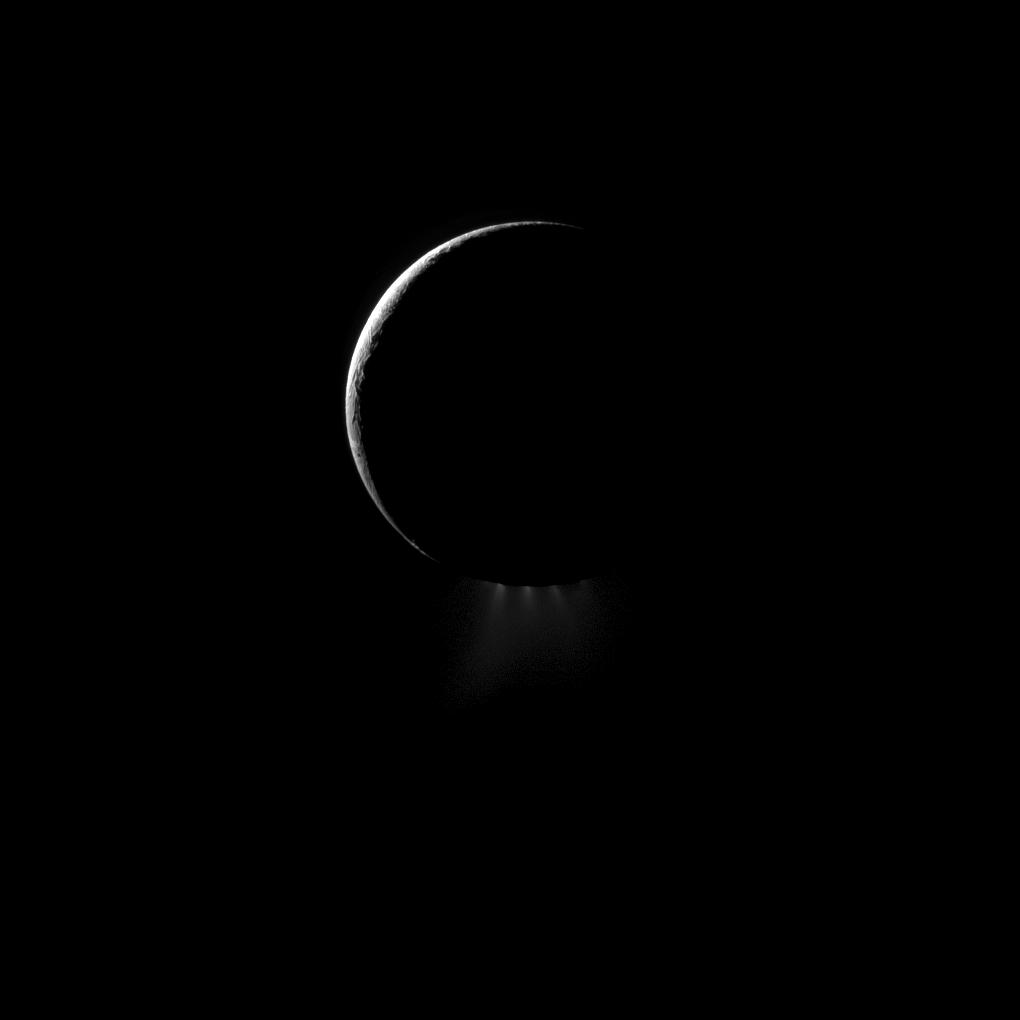Plumes and a Crescent

| PIA Number | PIA12762 |
|---|---|
| Language |
|
A crescent Enceladus, imaged from the night side, shows off its spectacular water ice plumes emanating from the south polar region of this moon of Saturn.
This image was captured at a phase, or Sun-Enceladus-spacecraft, angle of 157 degrees so that sunlight would reveal the backlit plumes. Terrain near the south pole is now dark as spring has come to the northern hemisphere of the moon. See Bursting at the Seams and New to Old on Enceladus for earlier, closer views.
Lit terrain seen here is on trailing hemisphere of Enceladus (504 kilometers, or 313 miles across). North is up.
The image was taken in visible light with the Cassini spacecraft narrow-angle camera on Jan. 30, 2011. The view was obtained at a distance of approximately 228,000 kilometers (142,000 miles) from Enceladus. Image scale is 1 kilometer (0.6 miles) per pixel.
The Cassini-Huygens mission is a cooperative project of NASA, the European Space Agency and the Italian Space Agency. The Jet Propulsion Laboratory, a division of the California Institute of Technology in Pasadena, manages the mission for NASA's Science Mission Directorate in Washington. The Cassini orbiter and its two onboard cameras were designed, developed and assembled at JPL. The imaging team is based at the Space Science Institute, Boulder, Colo.
For more information about the Cassini-Huygens mission visit http://saturn.jpl.nasa.gov or http://www.nasa.gov/cassini . The Cassini imaging team homepage is at http://ciclops.org .
Credit: NASA/JPL/Space Science Institute
